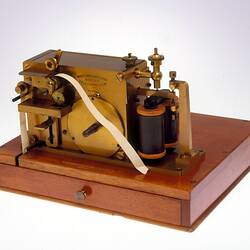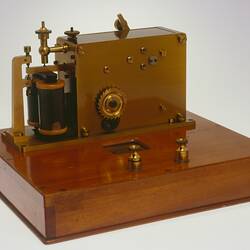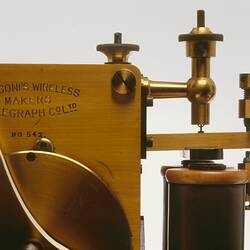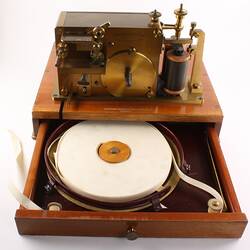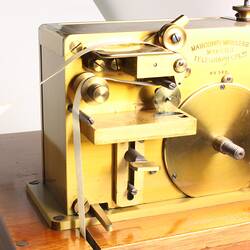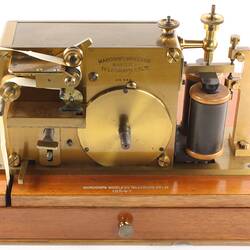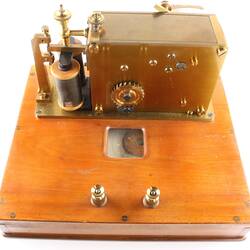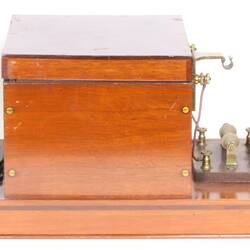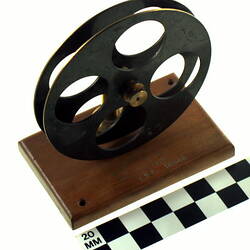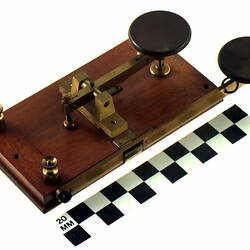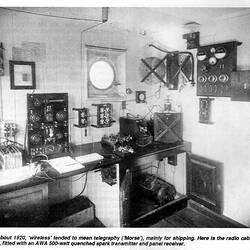Summary
Morse inker, might have been used in association with a coherer to provide a permanent record of a radio reception.
Inker records the incoming message when connected to a compatible receiver; the message appears as dots and dashes on the paper tape.
When the coils are actuated, the armature moves down and, via a lever through the box, lifts the inking wheel from the ink well and into contact with the paper tape, leaving a mark on the tape every time a signal is received.
The inker is operated by a clockwork mechanism, which uses a winding handle such as HT 33722 or ST 15464.3.
Part of set:
ST 18546 Coherer And Tapper, Marconi
ST 18546.1 Coherer Based Detector Assembly - Marconi, Radio Receiver
ST 018546.2 Coherer And Tapper, Marconi
ST 018547 Morse Inker - Marconi, Radio Receiver
ST 018548 Morse Recorder Reel - Marconi, Radio,
ST 018549 Morse Key - Marconi's Wireless Telegraph
ST 018550 Condenser - Marconi, Radio,
ST 018551 Induction Coil - Marconi, Radio,
ST 018552 Transmit or Receive Mode Switch - Marconi, Radio,
The set should contain a jigger, which might be.ST 021412 (possibly made at Melbourne University Engineering School).
Physical Description
Brown wooden base with drawer containing reel of paper tape on a revolving table. Base is fitted with a window for observing paper tape. There is a pair of brass terminals at the back of the base. At the front of the base is a brass box containing a clockwork motor, a paper feed and inking mechanism. A pair of coils are at one end, with moving armature attached to the inking wheel at the other end of the barass box. The motor winding handle is missing. The paper tape has been drawn from the reel in the base and passes the inking wheel and then the serated driving drum. The inking mechanism is actuated by a lever that passes through the brass box and is connected to the iron armature above the two coils. Key for winding up recorder spring, no. 542
More Information
-
Collecting Areas
-
Acquisition Information
Purchase
-
Manufacturer
Marconi's Wireless Telegraph Co Ltd, Chelmsford, England, Great Britain, circa 1906
-
Inscriptions
Base: MARCONI'S WIRELESS TELEGRAPH CO LTD Brass box: MARCONI'S WIRELESS / MAKERS / TELEGRAPH CO LTD / No 542. Top of both coils: 250 (omega superscript) INDUCTIVELY
-
Brand Names
-
Classification
-
Category
-
Discipline
-
Type of item
-
Overall Dimensions
335 mm (Width), 286 mm (Depth), 222 mm (Height), 9 kg (Weight)
-
Exhibition Collection Management
295 mm (Length), 340 mm (Width), 225 mm (Height), 9 (Weight)
-
Dimensions
286 mm (Length), 336 mm (Width), 225 mm (Height)
Measurement From Conservation. Measuring Method: Maximum dimensions
-
Keywords

